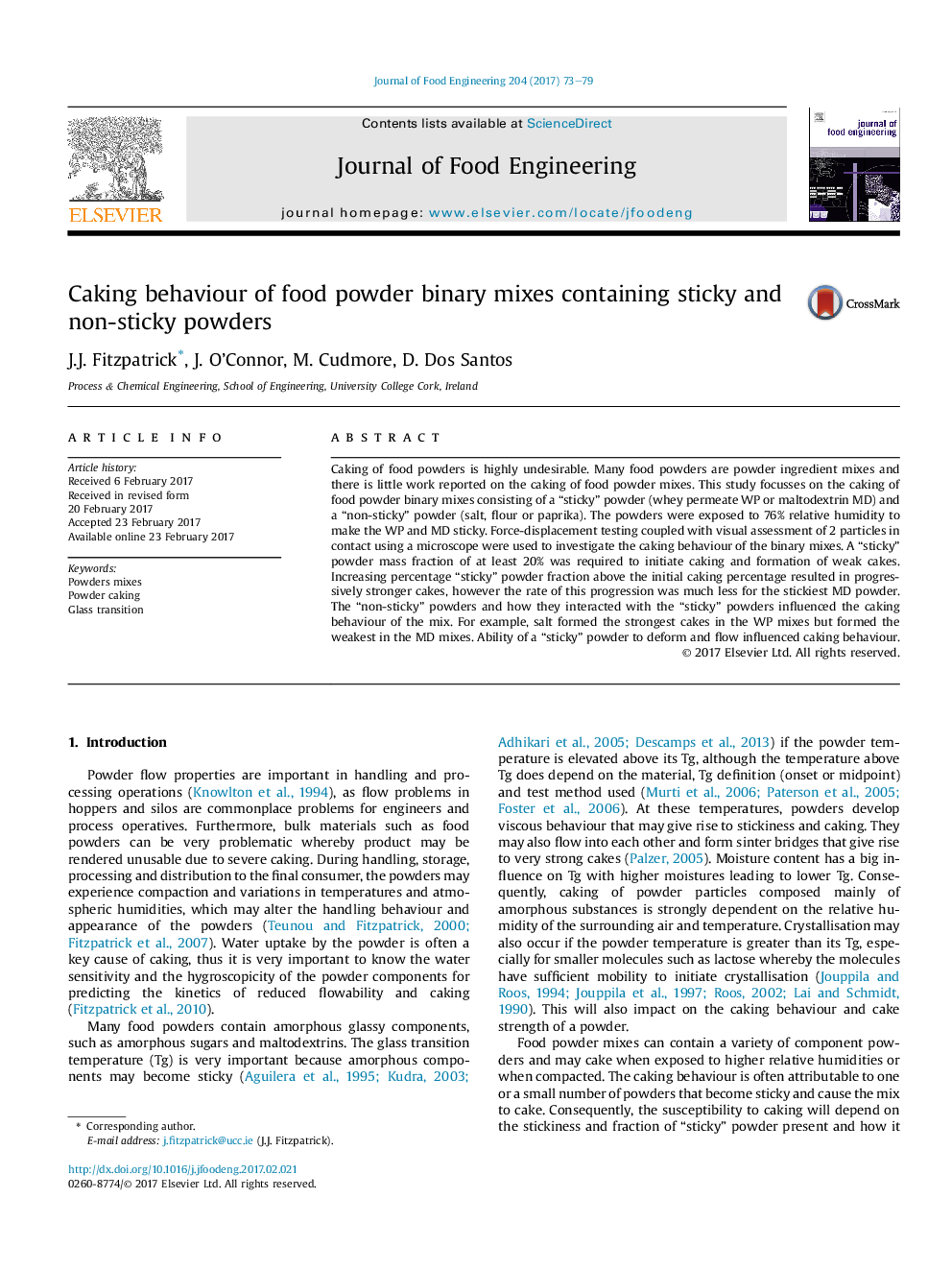| کد مقاله | کد نشریه | سال انتشار | مقاله انگلیسی | نسخه تمام متن |
|---|---|---|---|---|
| 4909004 | 1427097 | 2017 | 7 صفحه PDF | دانلود رایگان |
- At least 20% “sticky” powder fraction was required to initiate caking.
- Different “non-sticky” powders can display different caking behaviours in mixes depending on the “sticky” powder.
- All “non-sticky” powders greatly reduced the strong caking effect of the “stickiest” maltodextrin powder.
- Caking behaviour is highly influenced by the “sticky” powders ability to deform and flow.
Caking of food powders is highly undesirable. Many food powders are powder ingredient mixes and there is little work reported on the caking of food powder mixes. This study focusses on the caking of food powder binary mixes consisting of a “sticky” powder (whey permeate WP or maltodextrin MD) and a “non-sticky” powder (salt, flour or paprika). The powders were exposed to 76% relative humidity to make the WP and MD sticky. Force-displacement testing coupled with visual assessment of 2 particles in contact using a microscope were used to investigate the caking behaviour of the binary mixes. A “sticky” powder mass fraction of at least 20% was required to initiate caking and formation of weak cakes. Increasing percentage “sticky” powder fraction above the initial caking percentage resulted in progressively stronger cakes, however the rate of this progression was much less for the stickiest MD powder. The “non-sticky” powders and how they interacted with the “sticky” powders influenced the caking behaviour of the mix. For example, salt formed the strongest cakes in the WP mixes but formed the weakest in the MD mixes. Ability of a “sticky” powder to deform and flow influenced caking behaviour.
Journal: Journal of Food Engineering - Volume 204, July 2017, Pages 73-79
